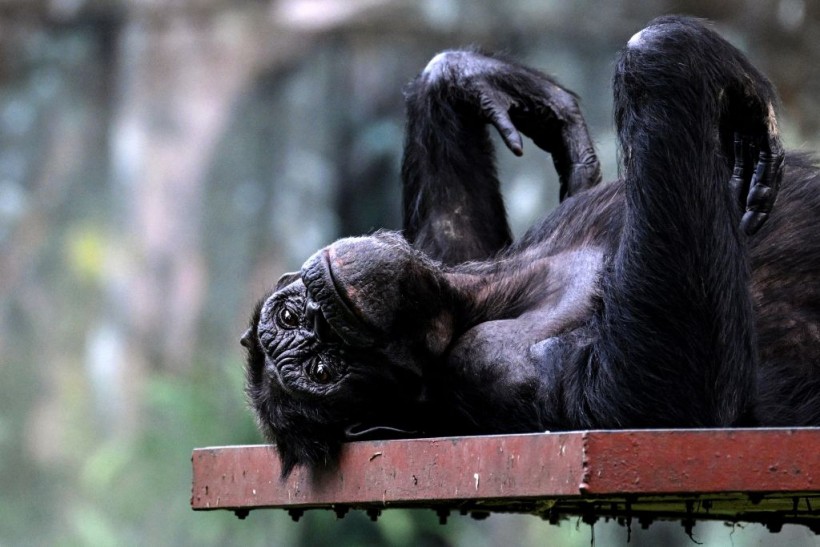Chimpanzees are known for their remarkable intelligence and ability to use tools, but did you know that they also have different cultures and preferences when it comes to eating termites?
A new study reveals the diversity and complexity of termite-fishing techniques among wild chimpanzee communities across Africa.
The diversity and complexity of chimpanzee termite-fishing across Africa
 (Photo : MOHD RASFAN/AFP via Getty Images)
(Photo : MOHD RASFAN/AFP via Getty Images)

The study, published in the journal Nature Human Behavior, was conducted by an international team of researchers who used camera traps to observe 10 chimpanzee communities in six countries: Cameroon, Gabon, Republic of Congo, Democratic Republic of Congo, Tanzania, and Uganda.
The camera traps were set up near termite nests and recorded the chimpanzees' visits over 15 years.
The researchers found that chimpanzees have different ways of fishing for termites, depending on the type of nest, the season, and the region.
Some chimpanzees use a single tool, usually a twig or a grass stem, to poke into the nest and collect the termites.
Others use a tool set, consisting of a perforating tool to make a hole in the nest and a fishing probe to extract the termites.
Meanwhile, some chimpanzees also modify their tools by stripping the leaves, biting the tip, or opening the fibers to make a brush.
The researchers also discovered that termite fishing is a seasonal behavior that varies with the availability of termites and other food sources.
Termites are more abundant and active during the rainy season when they build large mounds above the ground.
During the dry season, termites retreat underground and are harder to access. Chimpanzees tend to fish for termites more often during the rainy season when they can supplement their diet with this nutritious snack.
The researchers concluded that termite fishing is a form of cultural diversity among chimpanzees, as different communities have developed their techniques and traditions over time.
They also suggested that termite fishing is a way for chimpanzees to learn and practice their cognitive and motor skills, which may have implications for understanding the evolution of human technology.
Also Read: Chimpanzee Primitive Language Discovered by Scientists During Response from Fake Snakes [Study]
Termite-fishing as a window into chimpanzee culture and cognition
Termite-fishing is not a new phenomenon, but an ancient practice that has been documented by primatologists and anthropologists since the 1960s.
Jane Goodall was the first to observe termite-fishing in wild chimpanzees in Tanzania, and it was the first evidence of tool use by a non-human species.
Since then, termite-fishing has been observed in many African chimpanzee populations, but with varying degrees of complexity and sophistication.
Termite-fishing is considered a form of culture, as it is a learned and shared behavior that is transmitted from one generation to the next.
Chimpanzees learn to fish for termites by observing and imitating their mothers and other group members, and by experimenting with different tools and techniques.
Termite-fishing also reflects the local ecology and environment of each chimpanzee community, as they adapt to the availability and characteristics of termite nests and other resources.
It is also a way to explore the cognitive and motor abilities of chimpanzees, as it involves planning, problem-solving, coordination, and manipulation.
This activity requires chimpanzees to select and modify appropriate tools, locate and access termite nests, insert and withdraw the tools at the right angle and speed, and remove and eat the termites from the tools.
Moreover, it involves social and emotional aspects, such as cooperation, competition, communication, and enjoyment.
Related article: Uganda Baby Kidnapped by Chimpanzee Dies After Brief Revival
© 2024 NatureWorldNews.com All rights reserved. Do not reproduce without permission.


![Roundworms with Short Memories 'Stop Forgetting' When Frozen or Given Lithium [Study]](https://1471793142.rsc.cdn77.org/data/thumbs/full/70295/280/157/50/40/roundworms-with-short-memories-stop-forgetting-when-frozen-or-given-lithium-study.jpg)


